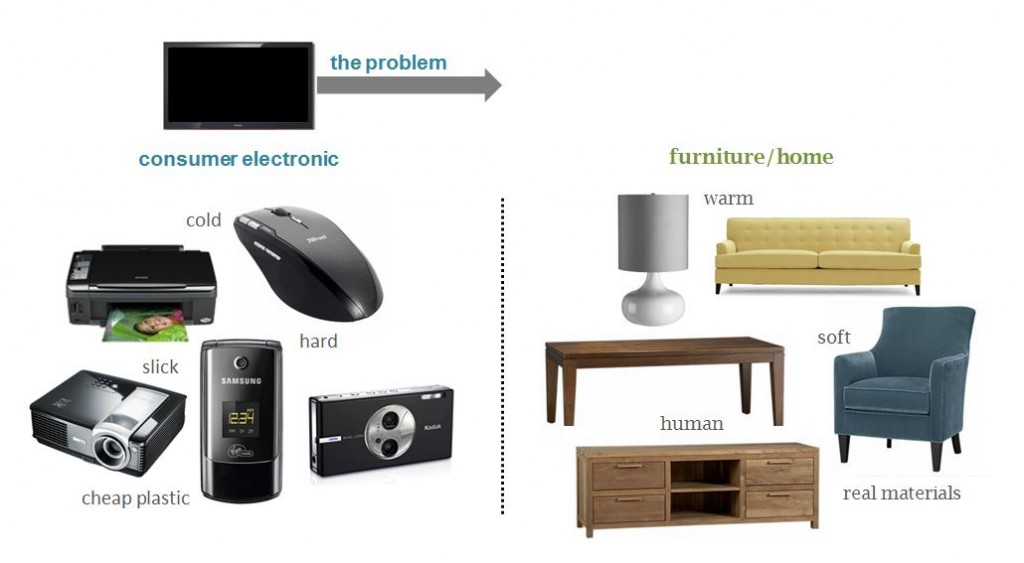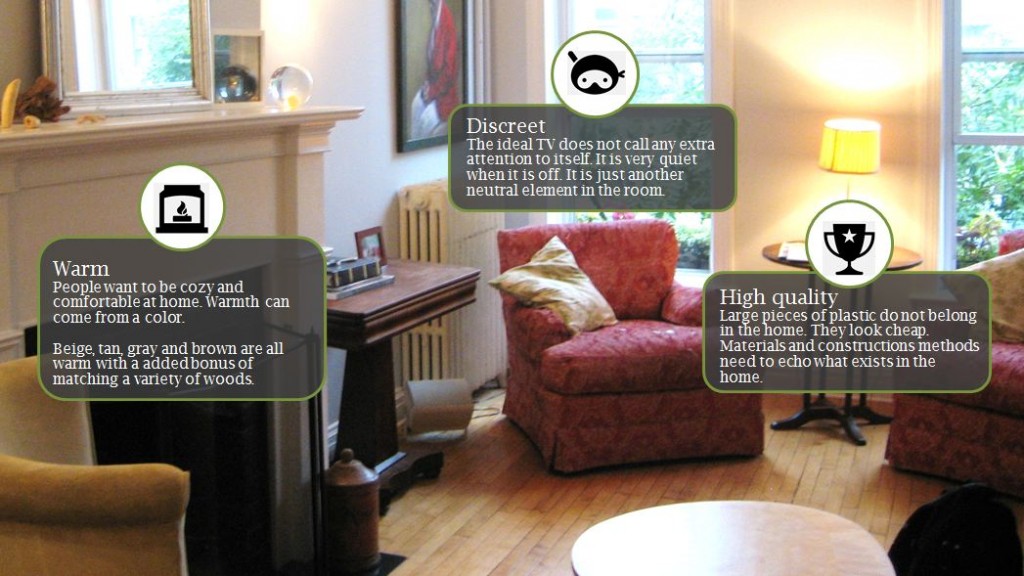Consumer Electronics: How do we stand out at retail and blend into the home?
A Pixel Paradise for Women.
Best Buy sells almost 500 TV sets by 45 companies that range from $70 to $10,000. What more can you ask for in such a pixel paradise? Alas, there are still people who are not happy, particularly women. Although women are involved in almost 75% of all consumer electronic purchases, a survey at the Consumer Electronics Show in 2004 found that less that 1% of women felt that the manufacturers were considering them in their designs.
As one global electronics manufacturer realized this, they hired the Femme Den to help them design a TV that would make women happy. The Femme Den realized years ago that the way to an American man’s heart and an American woman’s heart could be quite different. The path to an American’s woman’s heart is harder, longer and rockier and the TV industry had veered off of it.
This learning is compounded by the fact that the consumer electronics industry was created by men, and it is still run by male designers, engineers, executives and salespeople. It’s only natural that they think as, eh, men. They design, advertise and sell TVs with the attributes important for men, particularly for engineers. They push hard for better performance and more features. This approach pays off – the technical progress in television performance has been amazing.
For better or worse, the fairer sex are more demanding consumers than men when it comes to TVs. A woman wants the highest quality TV she can afford… and she also wants it to fit into her home. What’s more, she wants the whole experience from choosing a TV set to replacing it years later to be simple, straightforward and communicated in a language that makes sense. Today when a woman walks into a Best Buy, she is confronted by a wall of TVs that look almost identical. A choice of 500 TVs doesn’t mean much because they all seem to be the same. They look like carbon copies of each other with the same color, same material, and same finish. This sea of sameness is confusing and unwelcoming. In addition, the shiny black plastic and gray cold metal aesthetic are designed to seamlessly blend into the consumer electronics store environment. However, women don’t live in consumer electronics stores and they don’t want to. At home, a typical TV set looks aesthetically jarring. It sticks out and captures her attention even when it is off.
By looking at women’s values and priorities in home electronics, we flipped the standard paradigm—we designed a TV that stands out in the store and blends into the home. By standing out in the store, we make is easier for her to decide what TV to buy. She no longer needs to make a choice between 20 identical options. By blending in at home, we make a TV that’s a pleasure to live with. The warm colors and softer form language work with home décor and furniture. It’s made with home-worthy materials and quality construction methods—no cheap plastic here. It’s discreet and can be overlooked even when it’s off.
This program followed the Femme Den transparent design approach and defined a new design language for women.







